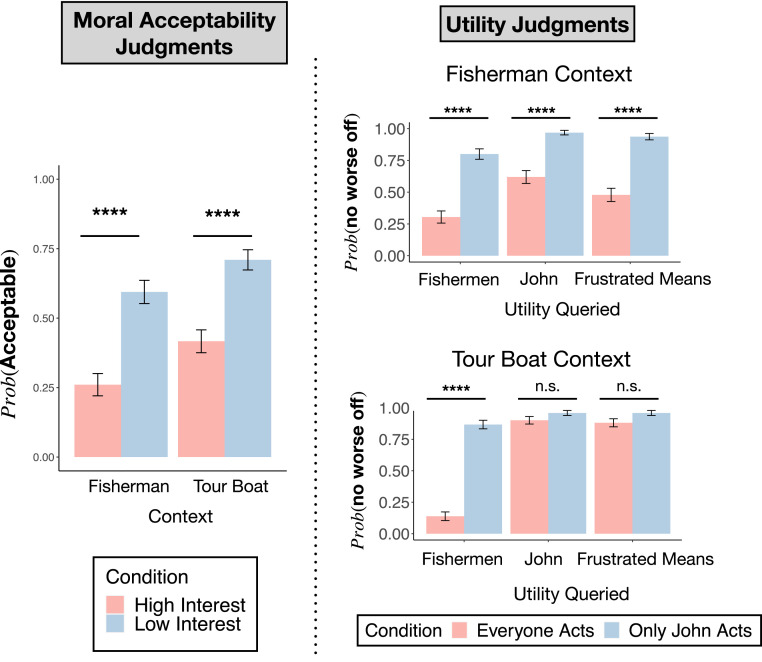Fig. 5.
(Left) Moral acceptability judgments for the fisherman and tour boat contexts. Each context exhibits a similar pattern of moral acceptability: The action is more permissible in the low-interest condition compared to the high-interest condition. (Right) Utility measures for each context. In the fisherman context, all three measures (everyone’s utility, John’s utility, and frustrated means) show a similar pattern. This context therefore does not differentiate between the measures. In the tour boat context, the measures exhibit very different patterns. In this context, it becomes clear that considering everyone’s utility explains the moral acceptability data better than considering John’s utility in isolation or whether John’s action is a means to his end. Error bars are SEM. **** indicates ; n.s. indicates .

